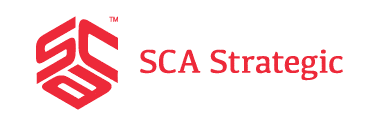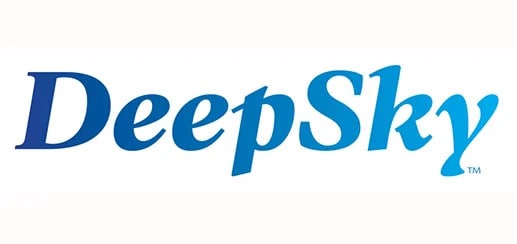Every modern business needs effective inventory management. This dictates the balance between meeting demand and optimizing spending. Inventory forecasting – the process of predicting future inventory levels – is a key part of inventory management.
As businesses navigate the complexities of their inventories, inventory management software is becoming increasingly important. Its use is expected to show a CAGR (Compound Annual Growth Rate) of 5% from 2023 to 2032.
Against this backdrop, businesses more than ever before need to understand the intricacies of inventory forecasting. And thankfully, there are a lot of strategies and tools available. In this guide, we’ll discuss the nuances of inventory forecasting. We’ll cover strategies, benefits, challenges, and best practices so businesses can use it to their advantage.
Why Inventory Forecasting Matters
Inventory forecasting allows for efficient business operations. It offers a range of benefits for the competitive business landscape, let’s take a look at some of them.
Cost Reduction
One of the main reasons why inventory forecasting matters is that it reduces spending. When businesses can predict future demand accurately, they can optimize their inventory and reduce excess stock. This cuts holding costs like storage, handling, and insurance. It also eliminates several problems like inventory obsolescence and markdowns.
Improved Customer Service
When businesses anticipate future demand, they can ensure products are available when and where needed. This means fewer ‘out of stock’ products and more satisfied (and loyal) customers.
Better Decision-Making
With inventory forecasting, business owners have useful insights to enable strategic decisions. Inventory forecasting means they understand their customers better and can make informed decisions about production, procurement, and pricing.
Competitive Advantage
Businesses need to remain competitive for success. Inventory forecasting means anticipating market trends and customer preferences ahead of competitors. This means companies can respond quickly to changes in demand. With this, businesses can fulfill orders promptly and adapt with agility. Ultimately, this strengthens their reputation and market position.
Strategies for Inventory Forecasting
Effective inventory forecasting requires being strategic. Here are some approaches that allow businesses to anticipate demand and optimize their process.
Historical Data Analysis
Using historical sales data is crucial for inventory forecasting. When you analyze past sales trends, demand fluctuations, and patterns, you can identify recurring themes. This informs future projections.
Demand Forecasting Models
These include a range of analytical techniques. Each one aims to predict future demand for services or products. These approaches use several mathematical and statistical measures to analyze data and extrapolate trends, and include:
- Times series analysis: This means studying data collected over consecutive periods. It is analyzed to identify trends and patterns, which can then inform forecasting.
- Regression analysis: This approach explores the relationship between different variables. For instance, it will look at sales volume compared to price, promotions, or economic factors. This can then develop a predictive model to forecast demand.
- Machine learning (ML) algorithms: This includes various types of ML models. It is a powerful tool for inventory forecasting. The algorithms are capable of analyzing large datasets. They can spot complex patterns and help businesses adapt to changing demand dynamics.
Collaborative Forecasting with Suppliers
Collaboration with supplies helps you both out. This is especially true for industries that have complex supply chains. This practice involves sharing sales data, market insights, and demand forecasts with suppliers. In doing so, you can make sure production schedules align with your inventory levels. This transparency and communication reduces lead times and improves your inventory management efficiency.
Seasonal Trend Analysis
This strategy focuses on identifying recurring patterns in demand concerning seasonal variations. When businesses understand the impact of seasonality on product demand, they can adjust their inventory levels and marketing strategies. This will ensure stock availability remains optimal so you can maximize sales opportunities.
Inventory Optimization Techniques
These aim to strike a balance between retaining enough stock while minimizing inventory write-off risks and holding costs. The techniques include:
- Inventory turnover analysis
- Safety stock optimization
- Economic order quantity (EOQ) models
By optimizing inventory levels based on cost considerations and demand forecasts, you can enhance operational profitability and efficiency.
Tools and Technologies for Inventory Forecasting
The above strategies require tools and technologies to support inventory forecasting. Here are some of the key solutions:
- Inventory management software: This is the backbone of inventory forecasting. It gives businesses control and visibility over their inventory. This includes their stock, orders, and supply chain operations. Software solutions like these have demand forecasting modules built in. They also have algorithms to help you optimize your inventory in real-time.
- Enterprise resource planning (ERP) systems: These allow businesses to integrate various functions into one platform. They’re a comprehensive solution enabling companies to generate accurate demand forecasts.
- Advanced analytics and predictive modeling tools: These use sophisticated algorithms and machine learning to analyze vast amounts of data to generate accurate forecasts. They help uncover correlations, patterns, and trends.
- Cloud-based solutions: These offer flexibility, scalability, and accessibility. They use cloud computing to reduce infrastructure costs and improve collaboration.
- Internet of Things (IoT): This enables businesses to collect data from any connected devices or sensors in the supply chain ecosystem. They can capture data on inventory levels, production rates, customer interactions, transportation routes, and more. This all happens in real time.
- Snowflake schema: The benefits of Snowflake Schema for data warehousing are tangible. This represents a data warehousing architecture with advantages in terms of scalability and flexibility. When you organize data in this way, you can create efficient querying and analysis to help forecasting.
Benefits of Effective Inventory Forecasting
When you execute accurate inventory forecasting, there are plenty of benefits – and not only to stock management. Here are some of the most significant advantages.
Demand Volatility
This is a significant challenge for businesses. Yet, with effective inventory forecasting, business owners can anticipate and adapt to fluctuations. It doesn’t matter if these are because of seasonal variations, unforeseen events, or market trends; you’ll be better able to adjust and lessen the risks of stockouts and overstocking. This means you can meet customer needs without paying unnecessary holding costs.
Data Accuracy and Availability
Having accurate and reliable data is important for effective inventory forecasting. When you use advanced analytics, it means you can improve your forecasting accuracy. In turn, this helps you make better decisions on inventory management. With access to this timely and accurate data, you can be more confident with your forecasting.
External Factors That Impact Demand
Aside from your internal and historical sales data, effective inventory forecasting forces you to look at external factors. This includes market trends, competitor actions, geopolitical events, and economic conditions. When you consider these factors, you develop more adaptive forecasting. This means you can expect shifts in consumer preferences and marketing conditions.
Working with Supply Chain Partners
When you collaborate and share data with suppliers, distributors, and manufacturers, you also strengthen relationships. All businesses can align their schedules and inventory levels to streamline operations. This enhances supply chain resistance and also helps reduce costs and improve lead times. It’s a win-win all round.
Challenges of Inventory Forecasting
While the benefits are clear, businesses often face challenges in implementing and maintaining forecasting. Here are some of the most common hurdles:
- Demand volatility: Fluctuations in consumer behavior market trends and other external factors can result in unpredictable demand patterns. This may cause stockouts or overstocking, which impacts customers and profitability.
- Data accuracy and availability: Inaccurate or incomplete data is a big challenge. Businesses with inaccurate sales records, unreliable historical data, or missing data will have issues.
- External factors: Seasonality, weather events, geopolitical instability, and disruptions to the supply chain impact demand. These factors are beyond business control and pose challenges for forecasting.
- Integration with partners: Collaboration with supply chain partners is essential but not always easy. Misalignment can lead to inefficiencies and inaccuracies.
- Forecasting method: Choosing the right forecasting method is crucial in order to obtain accurate forecasts. There are heaps of techniques to choose from and it can be a challenge to find the best method for your requirements and data characteristics. When selecting the method, you need to consider factors like the level of uncertainty, forecast horizon, and data granularity.
- Model complexity and interpretability: When you use complex forecasting models like machine learning algorithms, it can be difficult to interpret the information. This can also lead to scepticism from decision-makers and stakeholders. It’s important to balance the complexity of the model with its interpretability. This way forecasts are more trustworthy and actionable.
- Errors and uncertainties: Forecasting errors and uncertainties are inevitable. Unforeseen events, variability in demand, and inaccuracies in models can result in discrepancies between predicted demand and reality. Managing these requires risk mitigation strategies, for example, safety stock buffers and scenario planning techniques.
Last Thoughts on Inventory Forecasting
Effective inventory management is important for success. It dictates the balance between spending and customer demand. Inventory forecasting means you predict your future inventory levels. This helps to achieve this balance.
Many strategies and tools are available to support businesses seeking to improve their inventory forecasting. Whichever models and methods they choose, the benefits are far-reaching. When you can anticipate demand accurately, you can optimize inventory levels to reduce stockouts and strengthen market position. You also reduce costs and have improved customer service, giving you a competitive advantage.
Implementing inventory forecasting isn’t exactly easy, but businesses can unlock their full potential by following best practices and investing in quality data.


















 View More
View More